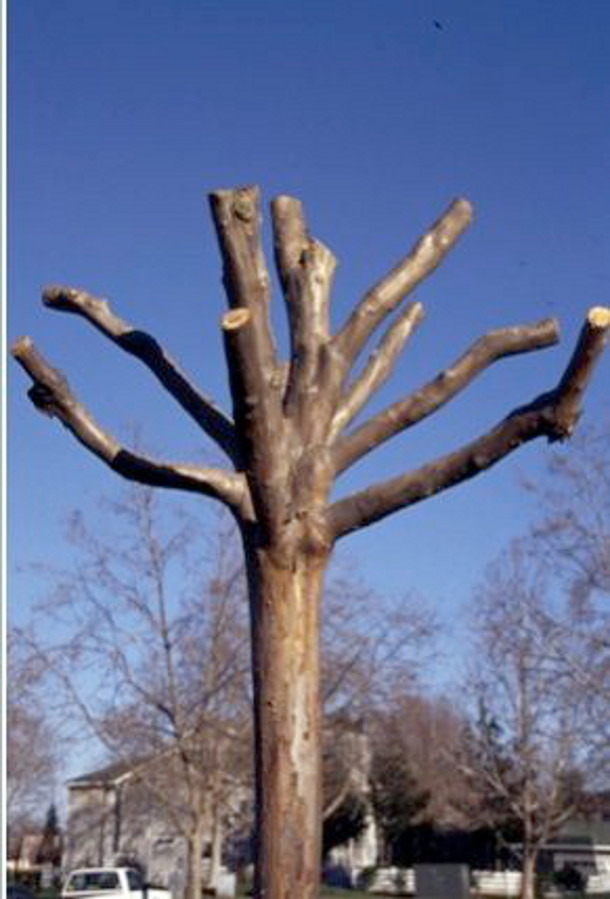
Topped tree: The tree doesn’t need this. Photo: Larry Costello.
What do trees really need? Sunlight, surely. Water, and nutrients from the soil. But do they need pruning? Some trees are said to be self-pruning, shedding dead limbs or even overly heavy live limbs. Trees and plants have evolved for millennia without our intervention.
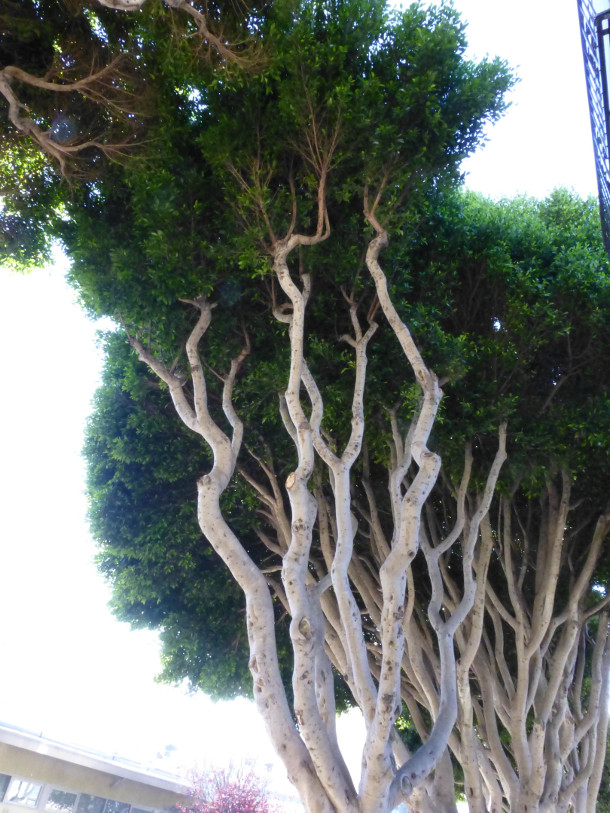
Lion-tailed tree: The tree doesn’t need this either. Photo: Ellyn Shea
Let’s face it; trees don’t need pruning, we need – or want – to prune trees. We want to control size, to produce more fruit and flowers, to reduce risk, or make the tree look better to us. We require plants to co-exist with us and our desires, and we will keep them around longer if we can control them.
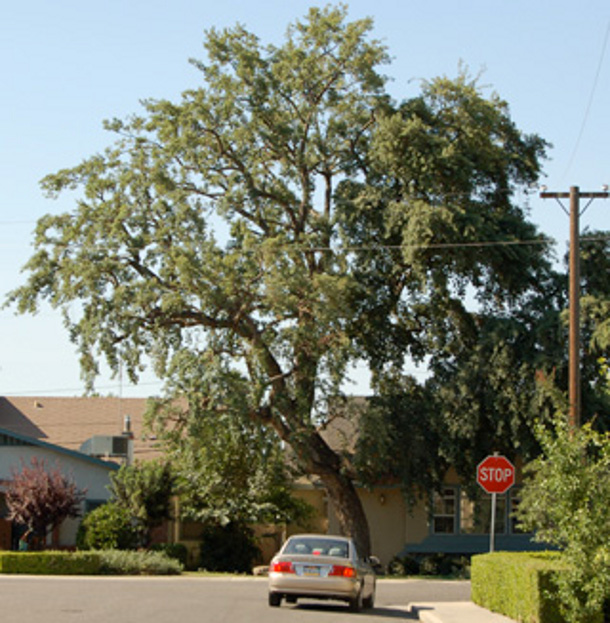
Thinning this tree is unnecessary. It would have been better to address the structural problems, such as the co-dominant stems on the left. Photo: Brian Kempf
When I first became interested in plants, I was extremely reluctant to prune. I’d tie plants to a taller support rather than cut them. As I began to study horticulture, I enjoyed pruning and I probably went overboard on occasion. These days I stop and think – why am I pruning? If no good reason applies, I’ll put those shears away.
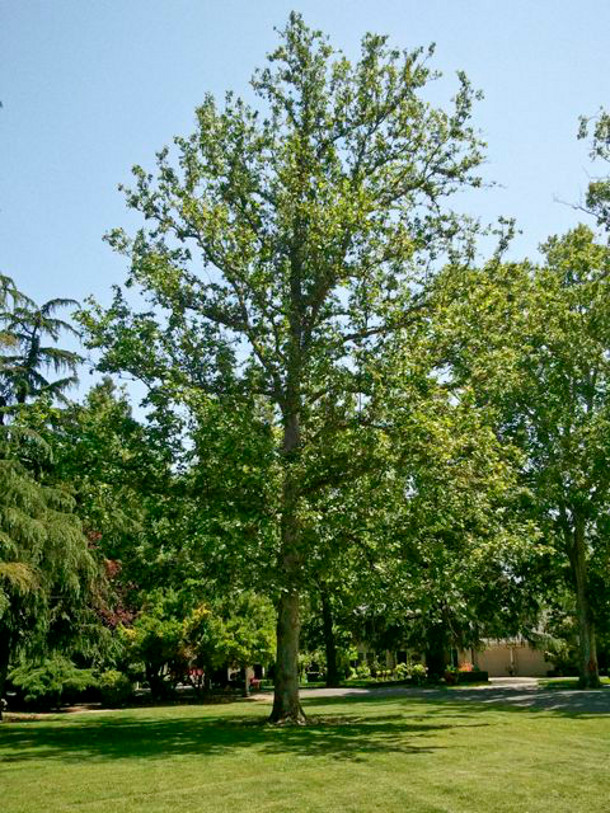
A well-trained tree has a single upright leader and scaffold branches that are well spaced apart both vertically and radially from the trunk. Photos: Ellyn Shea
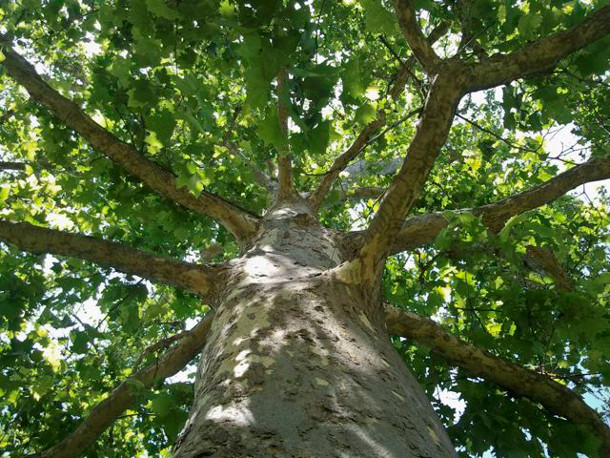
A well-trained tree has a single upright leader and scaffold branches that are well spaced apart both vertically and radially from the trunk. Photos: Ellyn Shea
A really good reason to prune is to train a sound structure, and this should be started as young as possible. Many people do not prune the tree enough while it is young, and then over-prune it when it is mature. We need to reverse our thinking.
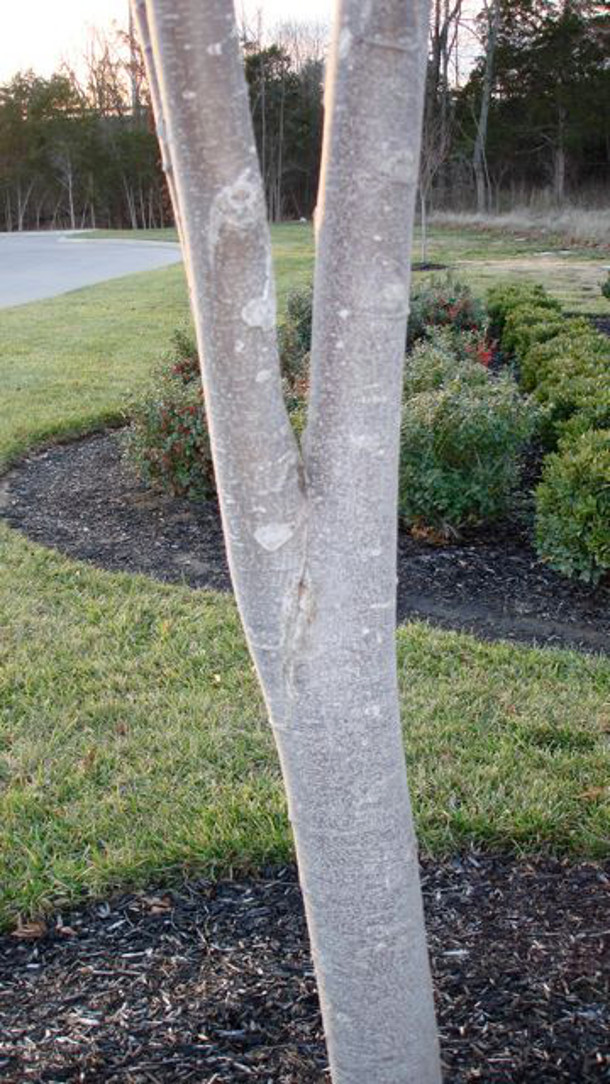
Prune one of the co-dominant stems, or leaders, when the tree is young. Photos: Larry Costello and Ellyn Shea.
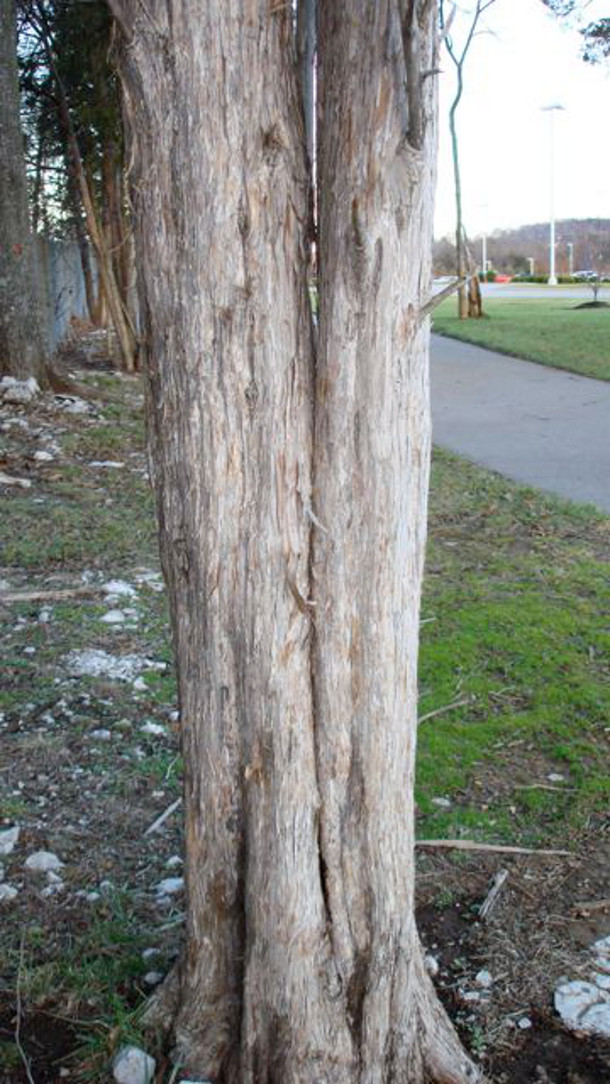
Prune one of the co-dominant stems, or leaders, when the tree is young. This older tree is now splitting in two and is much harder to repair. Photos: Larry Costello and Ellyn Shea.
Imagine a tree with two co-dominant stems of equal size. It is better to remove one of those stems as early as possible to prevent the mature tree from splitting at that point. Seems like over-pruning? Depends on the age of the tree. A young tree can survive losing even 50% of its foliage, while an older tree can have trouble losing more than 25%. Older trees also have trouble compartmentalizing a large pruning wound. Structural pruning can help older trees, but may be less effective depending on the structural issues.
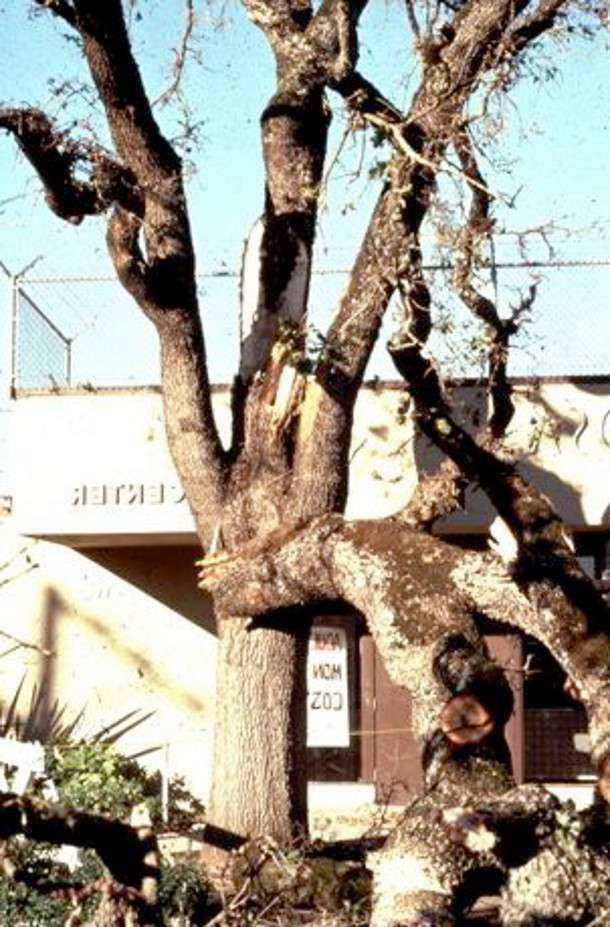
Structural training could have prevented this. Thinning, lion-tailing or topping won’t help a bit. Photo: Larry Costello
Don’t pay for unnecessary pruning! Structural pruning lengthens the life of an urban tree, and prevents trees from breaking apart and causing damage. In the forest, a tree losing limbs or even falling down is normal and necessary. We cannot tolerate fallen or broken trees in the urban environment; so structural pruning of young trees is the best way to preserve trees and lower maintenance costs.
To learn more, check out these websites: Urban Tree Foundation and University of Florida. Western Chapter International Society of Arboriculture (WCISA) sponsors structural pruning workshops and recently sent members a new book. Structural Pruning: A Guide for the Green Industry has great pictures and simple language, so you can help spread the good word. Contact the Urban Tree Foundation to see if additional copies are available.
Ellyn Shea is a consultant and garden educator in San Francisco.






Leave Your Comment